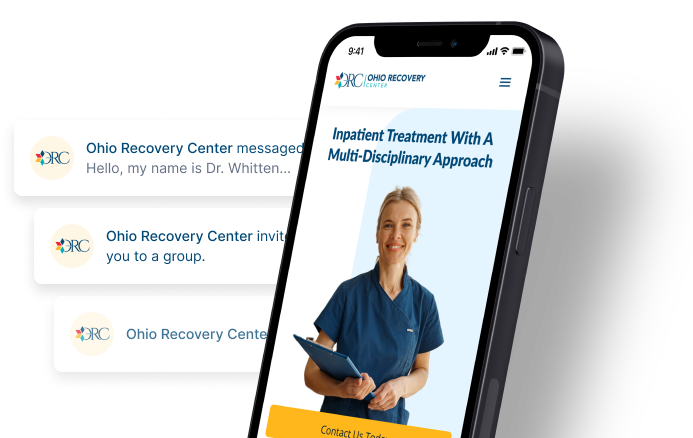What Is OARRS? | Ohio Automated Rx Reporting System (OARRS)

Medically Reviewed By: Kimberly Langdon, M.D.

Written by: Dr Jason Martin Psy.D., LCPC
To combat prescription drug abuse in Ohio, the Ohio Board of Pharmacy created OARRS in 2006. OARRS stands for Ohio Automated Rx Reporting System. This database tracks prescriptions for all controlled substance medications and more.

When you hear the term “drug abuse,” you might think of illegal drugs like cocaine and methamphetamine. However, many people also abuse prescription drugs, especially opioid analgesics (painkillers).
To combat prescription drug abuse among Ohio residents, the State of Ohio Board of Pharmacy created OARRS.
What Is OARRS?
OARRS stands for Ohio Automated Rx Reporting System.
Created in 2006, it’s an electronic database that collects information on outpatient prescriptions prescribed by physicians, nurse practitioners, dentists, and other licensed prescribers.
It’s also known as Ohio’s Prescription Drug Monitoring Program (PDMP) or Prescription Monitoring Program (PMP).
Tracks Controlled Substance Medication
The database tracks prescriptions for all controlled substance medications. Controlled substances are drugs that are regulated by the government, such as opioids, stimulants, and benzodiazepines.
OAARS also tracks two non-controlled substances: an anticonvulsant called gabapentin and an opioid antagonist called naltrexone.
The information tracked by OARRS helps pharmacists and prescribers avoid prescribing medications that could cause dangerous drug interactions in certain patients.
Flags Potential Drug Abuse
OAARS can also help them detect when a patient is abusing prescription drugs. Prescription drug abuse occurs when you use a drug in a manner not prescribed. For example, you might:
- take it more often than prescribed
- take higher doses than prescribed
- visit multiple doctors to get multiple prescriptions of the same drug (also known as “doctor shopping”)
In addition, OARRS can help alert law enforcement officers when someone is selling prescription drugs on the street.
Identifies Harmful Prescribing
It can also help professional licensing boards identify health care providers who are prescribing medications in a potentially harmful manner. For instance, they might prescribe dosages that are much higher than the patient needs.
Finally, judges in Ohio drug courts can use OARRS information to better understand a person’s controlled substance prescription history and medical records.
Prescription Drug Abuse In Ohio
Ohioans abuse prescription drugs for many different reasons. For example, some people may be trying to self-medicate mental health concerns like depression and anxiety. Other people abuse prescription drugs to reduce stress, cope with boredom, or fit in with their friends.
The most common prescription drugs of abuse in Ohio include:
- opioids, such oxycodone (OxyContin), hydrocodone (Vicodn), and tramadol (Ultram)
- benzodiazepines, such as alprazolam (Xanax), clonazepam (Klonopin), and diazepam (Valium)
- stimulants, such as amphetamine (Adderall), lisdexamfetamine (Vyvanse), and methylphenidate (Ritalin)
- barbiturates, such as amobarbital (Amytal), pentobarbital (Nembutal), and secobarbital (Seconal)
Abusing any type of prescription drug poses a high risk of overdose and addiction.
Overdose
An overdose occurs when you use too much of a drug. Symptoms may vary depending on the person and the drug. However, the most common symptoms include:
- drowsiness
- anxiety
- confusion
- nausea and vomiting
- sudden change in breathing, heart rate, blood pressure, or body temperature
- chest pain
- seizures
- loss of consciousness
If you or someone you know experiences these symptoms, seek medical help right away. When left untreated, an overdose can be deadly, especially if it involves opioids. In 2015, Ohio had more opioid-related overdose deaths than any other state.
If you or a loved one abuses opioids, consider getting naloxone from your local pharmacy. Naloxone (brand name Narcan) is a medication that can rapidly reverse the effects of an opioid overdose.
Prescription Drugs, Heroin, & Fentanyl
Many opioid overdoses occur when a person abuses an opioid prescribed by their doctor. Other times, a person who has become addicted to a prescription opioid will run out of refills and turn to the illegal opioid heroin, which has similar effects.
Heroin is often laced with fentanyl, a synthetic (human-made) opioid that’s up to 50 times stronger than heroin and responsible for numerous overdose deaths. Fentanyl may also appear in prescription opioids sold on the street.
Addiction
Addiction (also called substance use disorder) is a serious disease that makes you feel unable to stop using drugs despite negative consequences, such as damaged relationships and job loss.
Symptoms of addiction may include:
- strong cravings for drugs
- mood swings
- loss of motivation
- loss of interest in activities once enjoyed
- avoidance of friends and family members
- tolerance, dependence, and withdrawal
Like other diseases, addiction requires professional treatment.
If you or someone you love struggles with prescription drug abuse or addiction, please reach out to Ohio Recovery Center. Our compassionate treatment providers offer medical detox, medication-assisted treatment, and many other forms of evidence-based care.
- Centers for Disease Control and Prevention - Prescription Drug Monitoring Programs (PDMPs) https://www.cdc.gov/drugoverdose/pdmp/index.html
- Centers for Disease Control and Prevention - Fentanyl Facts https://www.cdc.gov/stopoverdose/fentanyl/index.html
- Ohio State University - Opioid Epidemic in Ohio – Extension in Action https://extension.osu.edu/about/resources/opioid-epidemic-ohio-%E2%80%93-extension-action
- State of Ohio Board of Pharmacy - What Is OARRS? https://www.ohiopmp.gov/About.aspx

